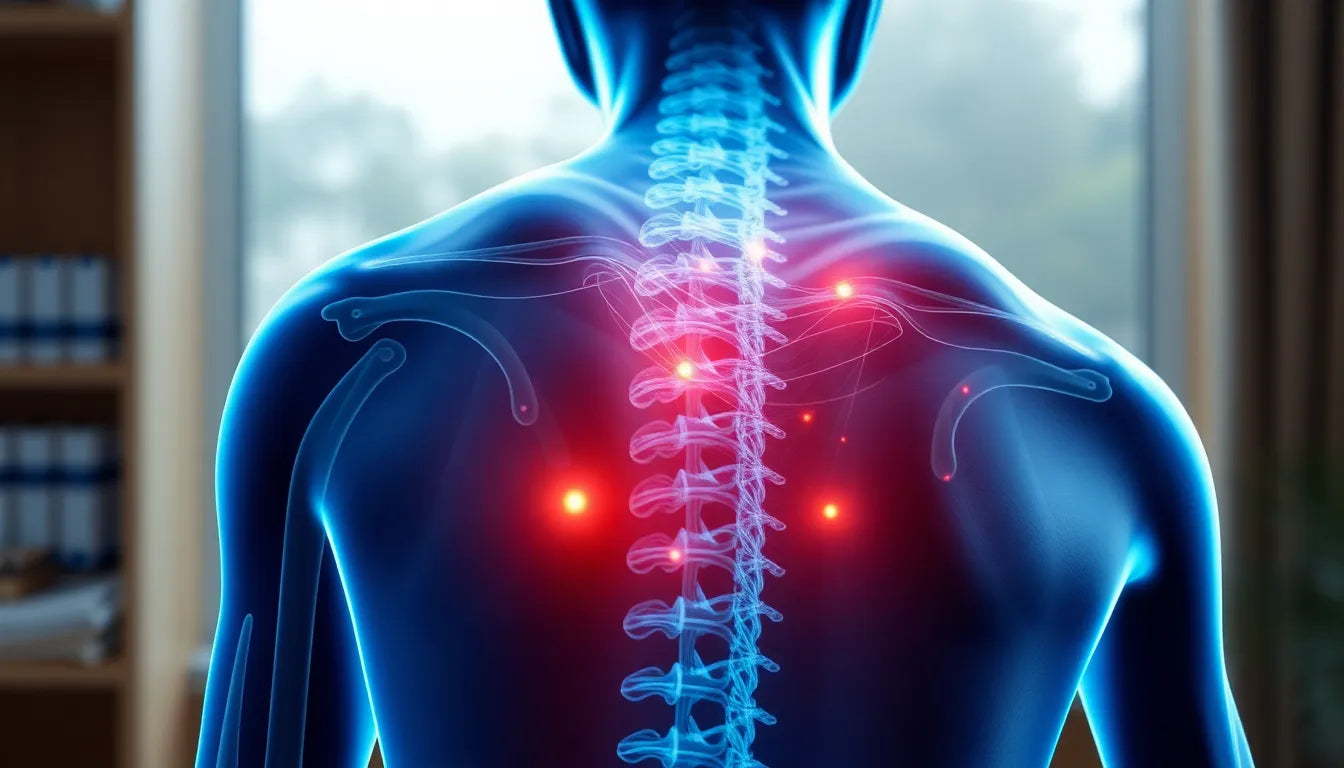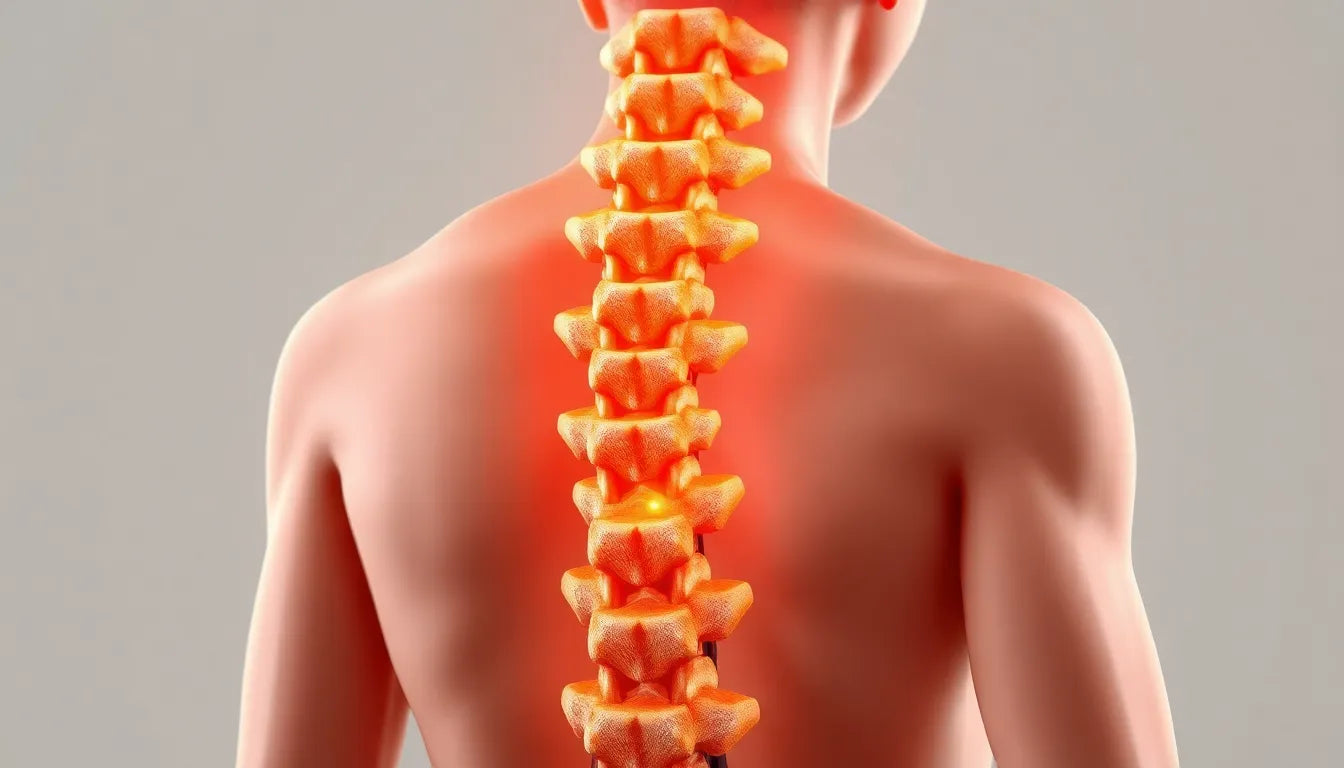A herniated disc is a common spinal condition that can cause significant discomfort and disrupt daily life. It occurs when the soft, gel-like center of a spinal disc pushes through a crack in the tougher exterior casing. This herniation can irritate nearby nerves, leading to symptoms such as pain, numbness, or weakness in an arm or leg. The condition is often the result of gradual wear and tear due to aging, known as disc degeneration, but it can also be triggered by injury or strain.
Understanding herniated discs: causes and impact
Herniated discs are prevalent among adults, especially those aged between 30 and 50. They can arise from various factors, including repetitive movements, improper lifting techniques, or even a sudden blow to the spine. The impact on daily life can be profound, affecting one's ability to perform routine activities, work, and enjoy leisure time. The pain and discomfort associated with a herniated disc can range from mild to severe, sometimes radiating from the lower back down to the legs, a condition known as sciatica.
The quest for relief: finding effective treatments
Given the potential for significant pain and the disruption to normal life, finding effective treatment options is crucial. Fortunately, there are numerous strategies available to manage the symptoms of a herniated disc. Treatment options vary widely, catering to different needs and severity levels. They range from conservative approaches, which focus on non-invasive methods, to surgical interventions for more severe cases.
Setting the scene: exploring treatment avenues
This article aims to guide you through the various treatment options available for herniated discs. Whether you're considering conservative treatments such as physical therapy and medication or exploring surgical options like microdiscectomy, understanding your choices is the first step toward relief. We will provide a comprehensive overview of these options, helping you make informed decisions about managing your condition and improving your quality of life.
Conservative treatments for herniated discs
When addressing a herniated disc, many individuals initially turn to conservative treatments, which can be highly effective for alleviating symptoms without the need for surgery. These treatments focus on reducing inflammation, relieving pain, and improving mobility.
Rest and activity modification
One of the first steps in managing a herniated disc is to allow the body time to heal through rest. Reducing physical activity can help decrease inflammation and relieve pressure on the affected disc. However, complete bed rest is generally not recommended, as it can lead to muscle weakness and stiffness. Instead, modifying activities to avoid movements that exacerbate symptoms is crucial. This might include avoiding heavy lifting, bending, or twisting motions that can strain the back.
Physical therapy for strength and flexibility
Physical therapy plays a vital role in the conservative management of herniated discs. A tailored physical therapy program can help strengthen the muscles supporting the spine, improve flexibility, and promote proper posture. Common exercises include gentle stretching, core strengthening, and low-impact aerobic activities such as walking or swimming. These exercises not only aid in recovery but also help prevent future injuries by enhancing overall spinal health.
Pain medication options
For many patients, pain relief is a top priority. Nonsteroidal anti-inflammatory drugs (NSAIDs) such as ibuprofen or naproxen are often recommended to reduce inflammation and alleviate pain. In some cases, muscle relaxants may be prescribed to ease muscle spasms. For more severe pain, doctors might suggest epidural steroid injections, which deliver medication directly to the inflamed area, providing significant relief for some patients. However, it's important to weigh the pros and cons of each medication type, as they can have side effects and are not suitable for long-term use.
Exploring alternative therapies
Alternative therapies can complement traditional treatments and provide additional relief for herniated disc symptoms. Acupuncture, for instance, is an ancient practice that involves inserting thin needles into specific points on the body to reduce pain and improve mobility. Some patients find significant relief through acupuncture sessions.
Chiropractic care is another alternative therapy that involves spinal adjustments to alleviate pain and improve function. While many patients report positive outcomes, it's essential to consult with a healthcare provider to ensure chiropractic care is appropriate for your specific condition.
Hot and cold therapy is a simple yet effective method for managing pain. Applying a cold pack can help reduce inflammation and numb sharp pain, while heat therapy can relax tight muscles and improve blood flow to the area.
Surgical options for severe cases
When conservative treatments fail to provide adequate relief or if the herniated disc causes significant neurological symptoms, surgical intervention might be considered. Surgery aims to remove or repair the damaged disc, alleviating pressure on the nerves.
Microdiscectomy: a minimally invasive solution
Microdiscectomy is a common surgical procedure for treating herniated discs. It involves the removal of the herniated portion of the disc to relieve pressure on the nerve root. This minimally invasive surgery typically results in a shorter recovery time compared to traditional open surgeries. Success rates are high, with many patients experiencing significant pain relief and improved function shortly after the procedure.
Understanding lumbar laminectomy
For patients with more extensive spinal issues, a lumbar laminectomy may be recommended. This procedure involves removing a portion of the vertebra to relieve pressure on the spinal cord or nerve roots. While effective in alleviating symptoms, it's important to discuss potential risks and benefits with your surgeon, as recovery can be more extensive than with a microdiscectomy.
Artificial disc replacement for long-term relief
In some cases, artificial disc replacement may be considered as an alternative to spinal fusion. This procedure involves replacing the damaged disc with an artificial one, aiming to preserve motion at the affected segment. Compared to traditional fusion surgeries, artificial disc replacement may offer better long-term outcomes in terms of mobility and recovery. However, not all patients are candidates for this procedure, and a thorough evaluation by a spine specialist is necessary.
By understanding the range of available treatment options, individuals with herniated discs can make informed decisions about their care, tailoring their approach to their specific needs and lifestyle. Whether opting for conservative management or considering surgical solutions, the goal remains the same: to find relief and regain quality of life.
Comparative Analysis of Herniated Disc Treatments
When evaluating treatment options for herniated discs, it's essential to consider the efficacy and recovery associated with both conservative and surgical methods. Conservative treatments, such as physical therapy and medication, often provide significant relief for many patients. These approaches focus on strengthening the muscles around the spine, reducing inflammation, and managing pain, allowing individuals to return to normal activities with minimal disruption.
On the other hand, surgical options like microdiscectomy or lumbar laminectomy are typically reserved for severe cases where conservative measures have failed. These procedures can offer immediate relief from symptoms, with many patients experiencing a marked improvement in pain and mobility shortly after surgery. However, recovery times can vary, and it's crucial to follow post-operative care instructions to ensure optimal outcomes.
Cost Considerations and Long-Term Outcomes
The financial aspect of treatment is another crucial factor to consider. Conservative treatments are generally more cost-effective, especially when covered by insurance. They often involve ongoing sessions with physical therapists or chiropractors, which can add up over time. Surgical interventions, while more expensive upfront, may offer a more permanent solution, potentially reducing long-term healthcare costs associated with chronic pain management.
Long-term outcomes for herniated disc treatments depend on various factors, including the patient's overall health, the severity of the disc herniation, and adherence to rehabilitation protocols. While many patients find lasting relief through surgery, others may achieve similar results with conservative management, particularly when combined with lifestyle changes such as regular exercise and weight management.
Frequently Asked Questions
What is the best treatment for a herniated disc?
The best treatment for a herniated disc varies depending on the individual's specific condition, symptoms, and overall health. Many patients benefit from conservative treatments like physical therapy and pain management, while others may require surgical intervention for more severe cases. Consulting with a healthcare provider is essential to determine the most appropriate treatment plan.
How long does it take to recover from a herniated disc?
Recovery times can vary widely. For those undergoing conservative treatment, improvement is often seen within a few weeks to a few months. Surgical patients may experience relief within days to weeks, but full recovery can take several months, depending on the procedure and individual healing process.
Are there any risks associated with surgery for herniated discs?
Like any surgery, herniated disc surgery carries risks, including infection, bleeding, or nerve damage. However, these risks are relatively low, and most patients experience significant benefits. It's crucial to discuss potential risks with your surgeon and understand how they will be managed.
Can lifestyle changes help manage herniated disc symptoms?
Yes, lifestyle changes can significantly impact the management of herniated disc symptoms. Regular exercise, maintaining a healthy weight, and practicing good posture can help alleviate symptoms and prevent further injury. Avoiding activities that strain the back is also important.
Is it possible for a herniated disc to heal on its own?
In some cases, a herniated disc can heal on its own over time. The body may reabsorb the herniated material, reducing pressure on the nerves. During this process, conservative treatments can help manage symptoms and support recovery.
By understanding the various treatment options and their implications, individuals with herniated discs can make informed decisions about their care. Whether opting for conservative management or considering surgical solutions, the primary goal remains the same: achieving relief and improving quality of life.


















